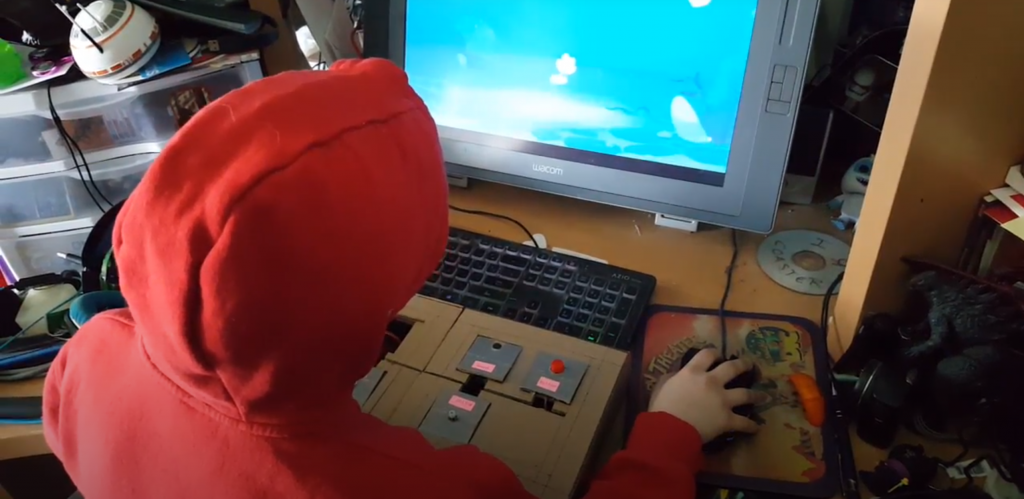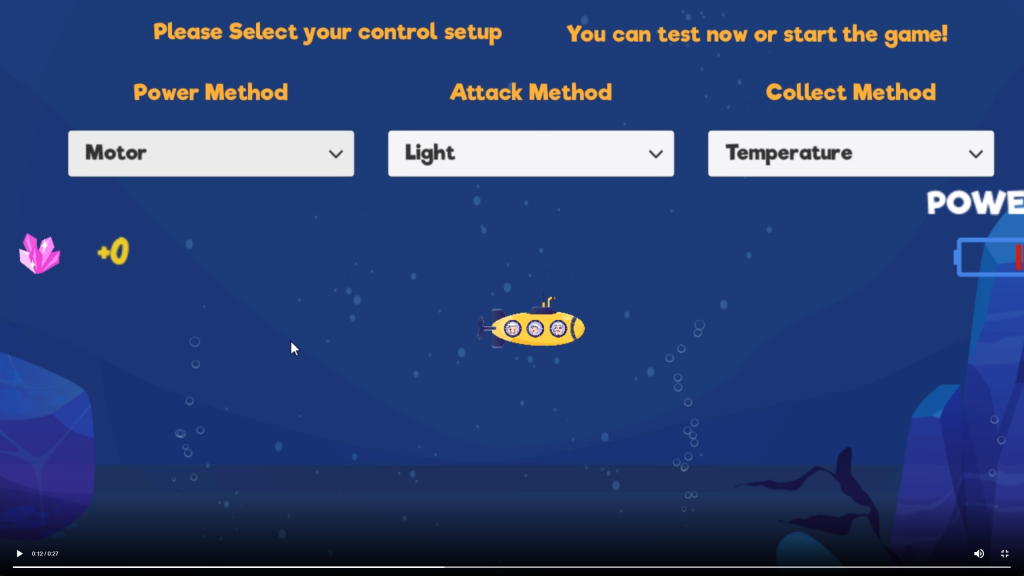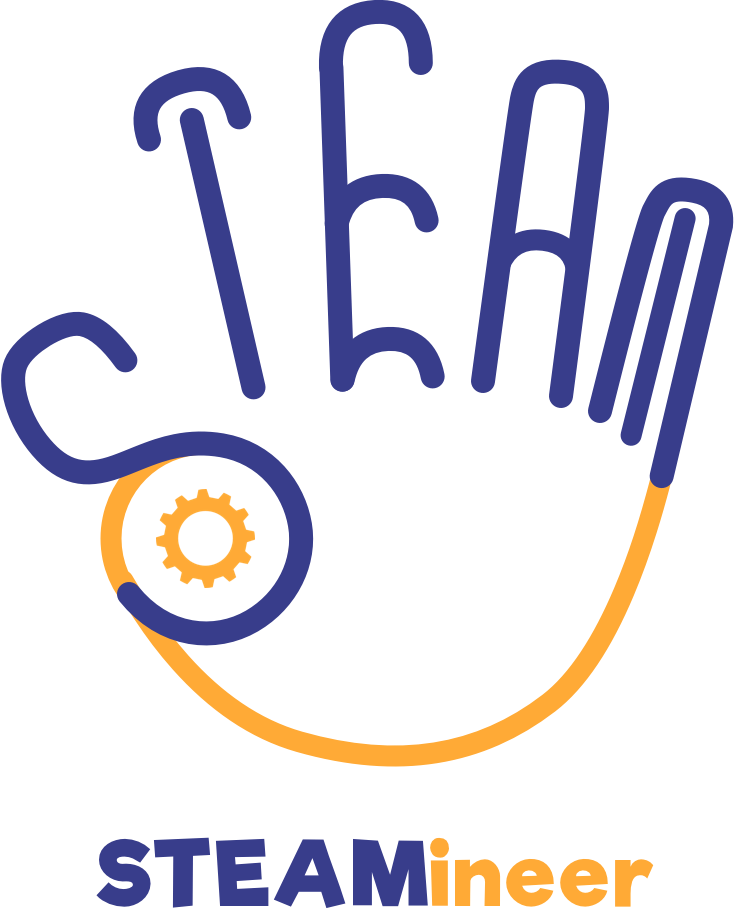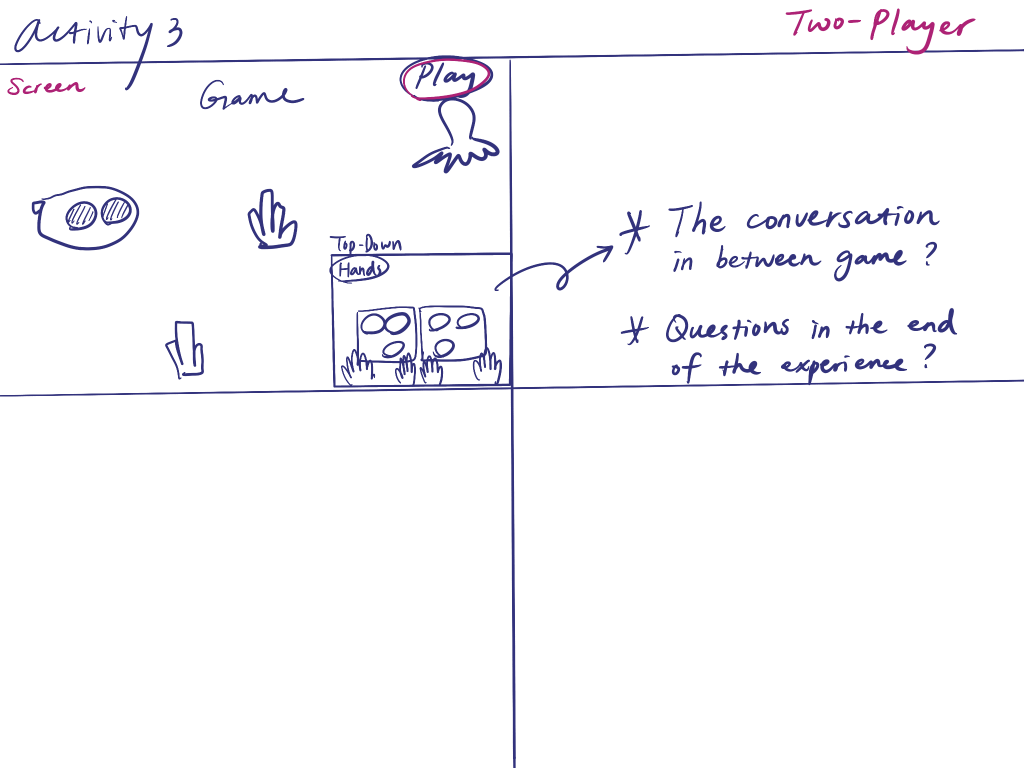Week 13 was an exciting week for Team STEAMineer! We were able to complete our second remote playtest and were able to see positive results of our iterations!
Monday we met with our faculty to discuss our strategy for Softs. (Soft Opening for our projects was the following week.) Normally, Softs would the faculty rotating between project teams in groups of 2 or 3 to visit project rooms for 15-20 minutes. During this time, they play and participate in the projects as one last round of feedback before finals. Since everyone is working remotely, project teams were paired with small groups of faculty for an hour-long video conference to present our work.
We considered hosting a live play-through of our experience or putting together a presentation with video clips from our playtests. After realizing that both approaches would present the same information, we decided to go with a presentation so we could include video of our audience participating in our experience. It also helped us ensure that we presented the best version of our product so we could communicate what was important. Marissa and Isabel took charge and spent the remainder of the week organizing materials for Softs. They clarified the goal of the project: Motivate student interest in engineering, technology, and art through maker centered education. And highlighted our specific approach to fulfill our goal: We sought to achieve this goal by prompting students to collaborate to modify game controllers in order to solve the problem of using the controller to play a digital game. They also listed out the project deliverables: the game, the Arduino controller, the instruction guide, and the evaluation materials. After reflecting on how the items serve the project goal, they also listed out the latest iterations and the ways they further reinforce the goals of the project.
Tuesday marked our second remote playtest. Josh, a 3rd grader and the son of one of our faculty, was able to play through our activity using our newly created controller. He also got to interact with the testing space using the controller. He spent extended time in the testing space and was experimenting! He tried out different combinations of sensors and had discussions with the facilitator about what was working or not working and why. Josh also played the game independently. Someone came in with a flashlight for the light sensor, but his experience with the game was not multiplayer. As a team, it was fun to see videos of him yelling “squawk” to use the sound input for attacking.

Following his playtest we had an interview with Josh about his experience. Like Hazel, he said his favorite part was shooting the torpedoes. He understood that the crystals were taken from Atlantis and spread out. When asked, he preferred using the controller to playing with the keyboard. He played the game 5 or 6 times and even got his high score, 33 crystals, while using the controller! He did share that he would prefer a more detailed Atlantis and more convincing under-water visuals. He also requested different kinds of enemies– specifically something more resilient. Similar to Hazel’s playtest, the joystick cap also kept coming off. Prior to Josh’s playtest, Ruth’s husband Sam tried out the controller and ran into problems with some of the inputs not working. The controller is also oriented so the power cable comes out of the bottom of the controller which was disorienting. Also the setting on the sound sensor was sensitive enough that the click of the button sensor would trigger the sound sensor. He appreciated the DIY feel of the cardboard, the art style, and the ability to change the inputs and try new combinations. Thank you to Ruth and Josh for taking the time to playtest and share your feedback with the team!
One of the biggest things we noticed from Josh’s playtest was how little he modified the controller. The panels of the controller are designed to be shifted around and re-arranged so players can better prioritize and position the inputs they need. The only time an input was shifted around was when the joystick was not oriented based on the game directions and had to be re-positioned. While we were excited about the success of the testing space, and how it better supported player modification of controls, we knew we wanted the controller to also support player modification.
One takeaway we learned from Code Gamer playtesting was that the students at Assemble responded very strongly and very positively to distinct character cases associated with each input. This idea of characters was something the team has had in the back of our heads, but had yet to implement in our experience. Following Josh’s playtest, we decided to try implementing characters. Yifan worked to design the characters for our inputs. She created five unique “sailors” with exaggerated features to reflect their functions. The sound sensor, for example, has large ears. Mia worked to integrate the sailor graphics into the Arduino inputs. The panels the sensors are mounted in that were once covered in duct tape now have the faces of the characters.
Additionally, Max and Mimi added the characters into the game. When the game is played with the Arduino controller in the test section, players assign inputs to the submarine’s functions, and the sailors appear in the windows of our submarine. (Yifan also updated the submarine to have three windows to reflect the three sailors for the three Arduino inputs.) The sailors swap out when different Arduino inputs are selected and they are positioned in the order of the inputs in the testing space to help players remember which inputs they selected for each function.

We also worked to incorporate the sailors into our story. Based on feedback from our playtest with Josh and Playtest Day, we have been trying to iterate on the story to make it better aligned with the game. Yifan has been working to not only update the story, but to also motivate players through the story. With the addition of the sailor characters, the story has been updated to encourage players to rely on the talents of their “crew” the sailors in order to save Atlantis. The team also got feedback from Jesse about the story and he encouraged us to have the story triggered by a natural disaster. Something like an earthquake could not only scatter the crystals and explain why they’re all over the ocean, but it could have even destroyed the submarine control panel which is why the players have to modify and reconstruct it.
To further encourage experimentation with the Arduino inputs, Max worked to add in unique effects for the inputs. When players switch between different sensors for the attack function, there are visual effects on the screen that correspond to the input. For example, the temperature sensor triggers a heat wave that destroys the octopuses and the sound sensor creates sound waves to defeat the octopuses. Our goal is that players will notice the effects and want to test different inputs to see what other effects they can unlock.
We also discussed other ideas we may want to implement in our experience like adding in voice-over for our story and creating images for the story. Iterations were made to the instruction guide to make it more polished. This week the team was able to reconnect with Assemble. Although we will not be able to playtest with the afterschool students or handoff our activity to Assemble at the end of the semester, we shared a link to the online game so students can play it at home.
With the game ready for Softs, we recorded the new content– the input effects and sailor characters and assembled our presentation. We also noted areas where we specifically hoped to ask for feedback including multiplayer vs. single player interaction, how to encourage players to modify the physical controller, and how we could support additional variables for player controller design (beyond assigning sensors for functions) in the future.
Check in next week to hear our feedback from Softs and to learn about the next iterations of our game for our final playtests!








